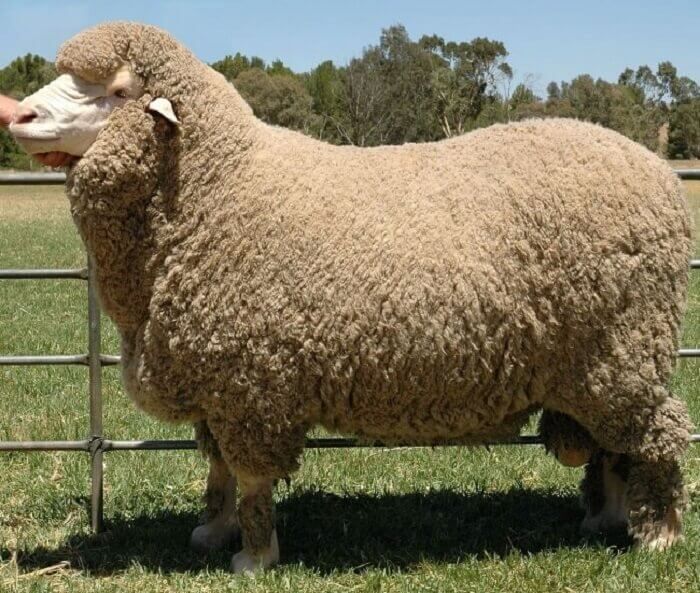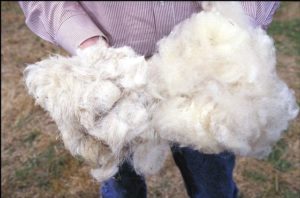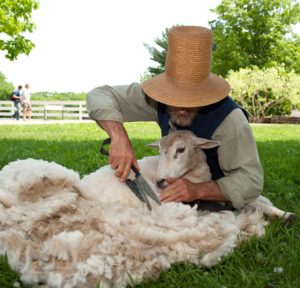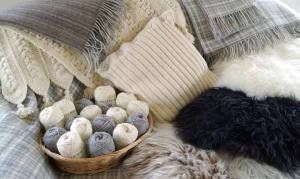Wool products are becoming increasingly popular. They are sometimes mixed with synthetic and natural additives.

Wool taken from sheep - fleece
Fleece is what the sheared wool of a sheep is called.
Wool - This is an animal skin covering that has beneficial properties and elasticity. It can be both homogeneous and heterogeneous. It depends on the fibers.

It is important to know that only a complete layer in which the fibers have not disintegrated during the process is called a fleece.
Fleece can be staple or braided. The structure depends on the germination of hairs from the skin and the grease that holds them together. If the fleece consists of staple fibers, then it will have increased smoothness and density, since they are equal. For braids, the opposite is true. The fibers are varied and the structure is loose.
The classifier is well versed in this. He unrolls the fleece, examines it, shakes it. If there are matted dirty shreds in it, they are deposited separately. All other fibers are measured.Everything must comply with GOST.
Characteristics and properties of sheep wool
The main component of wool is keratin, a mechanically strong protein material that resembles chitin. Fleece has three layers: inner, middle (scales), outer (thin small hairs). They are divided into homogeneous and heterogeneous fiber types.
In homogeneous wool, all fibers are of the same type - downy or transitional. It can also be divided into: fine, semi-fine, semi-coarse wool.

Fine-fleece type is used to make high-quality fabrics. They exist from downy fibers, which have a thickness of no more than 25 microns and a length of up to 9 cm.
It is interesting that for 1 kg of wool, the production of fine fabric takes three times more than coarse fabric.
The semi-fine breed contains a low concentration of fat Due to this, color difference may occur. Available in white, grey, brown and black. Sometimes in semi-fine wool there may be transitional fibers with coarse fluff, varying thickness (from 25 to 31 microns), length (9-12 cm).

Heterogeneous raw materials are divided into semi-rough and coarse types. Accordingly, the fibers are varied. The rough look is provided by coarse-wooled breeds of sheep (Karakul). It is a very scratchy and rough material to the touch. The basis of such woolen raw materials is sheep down and awn. The correct matching of different hairs serves as the quality and value of the product.
There is an English concept of “wool quality” or classification of wool raw materials. According to it, quality is determined by a number equal to the number of skeins of yarn over 512 meters. In Russia, quality is indicated by the thickness of the fibers. Simpler - the higher the fineness, the better the quality.
Wool has one interesting property - crimp (deviation of the fibers to the side). Among all fibers of natural origin, hair has a low thermal conductivity of 0.033 W/(m K). But this has nothing to do with good heat-saving ability. Also, wool absorbs water well and breathes well. When sweat gets on it, it removes it by evaporation, and absorbs the rest, but at the same time remains dry and warm. If, however, the wool gets wet well in water, then it takes a long time to dry and becomes heavy.
Where is sheep wool used?

Sheep fleece is used to make:
- knitted items;
- yarn;
- carpets, rugs;
- bedding (pillows, blankets, rugs);
- medicinal products;
- fabrics (velor, Boston, gabardine);
- shoes;
- crafts.
Felt is a dense, non-woven material used in clothing and footwear. Although its thermal conductivity is low, it protects from cold (familiar felt boots) or heat (Panama hats, budenovkas in the bathhouse).

Allergies rarely occur from sheep's wool. Woolen products can be worn by allergy sufferers. A coarse wool belt makes people with radiculitis and arthritis feel better. Warm mittens, socks, and hats save you from the cold. Woolen items are recommended to be worn by people suffering from asthma, heart disease, blood vessels, blood circulation and other diseases.
9 interesting facts
- In ordinary sheep, per 1 sq. mm of skin there are from 7 to 30 hairs, and meris (high-quality fine-string sheep) have from 29 to 88 hairs.
- When wearing woolen items on the body, a person experiences an electrostatic field from friction, thereby performing a therapeutic massage. And the lanonin content leads to rapid healing of wounds and pain relief.
- Fleece is highly fire resistant.
- The warmest socks are wool.
- The very first teddy bear was made more than 4600 years ago from sheep fleece.
- Felt is approximately 8 thousand years old.
- Wool products are elastic and resilient.
- Wool is self-cleaning.
- Fleece neutralizes unpleasant odors and toxic substances.


 0
0





